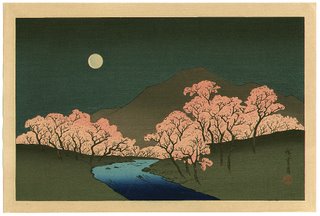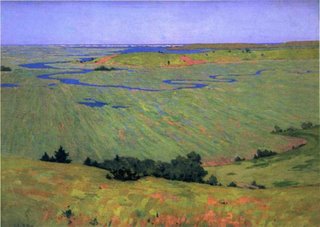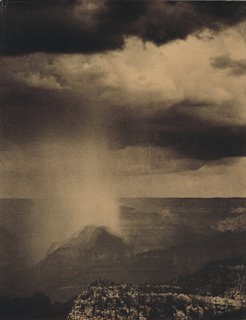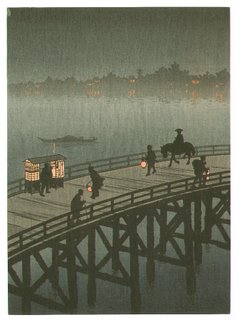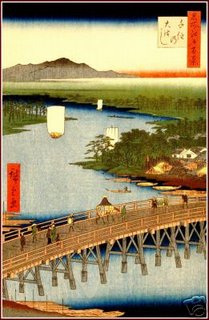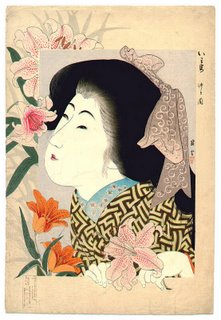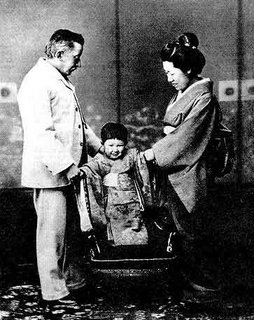 William Seltzer Rice began his art career as a watercolorist. At the Panama Pacific International Exposition of 1915, in San Francisco, Rice became interested in the art of Japanese prints. From that time on he worked almost exclusively with woodblocks, though he relied on watercolors and pastels for sketching on location. In the studio he would carve the blocks, apply oil based inks with a sable brush, and press the Japanese paper by hand.
William Seltzer Rice began his art career as a watercolorist. At the Panama Pacific International Exposition of 1915, in San Francisco, Rice became interested in the art of Japanese prints. From that time on he worked almost exclusively with woodblocks, though he relied on watercolors and pastels for sketching on location. In the studio he would carve the blocks, apply oil based inks with a sable brush, and press the Japanese paper by hand.
 He was the author of three books - Block Prints: How to Make Them (1929), Block Printing in the School (1941), and Portfolio of Block Prints (1932). He taught in the public school systems of the Bay area, and he also taught at the many art societies, including the San Francisco Art Association, the California Society of Print Makers, and the Prairie print Makers.
He was the author of three books - Block Prints: How to Make Them (1929), Block Printing in the School (1941), and Portfolio of Block Prints (1932). He taught in the public school systems of the Bay area, and he also taught at the many art societies, including the San Francisco Art Association, the California Society of Print Makers, and the Prairie print Makers.
Rice wrote about his philosophy of printmaking and said:
...the viewpoint of the artist differs from that of the commercial printer. In hand printing, each print has a beauty and individuality of its own. The aim is not to produce editions in large quantities, all alike and uniform, but to obtain slight variations which give a personal character to each print. The making of color prints of this type is essentially a painter's performance. There is a great fascination about color experimentation. The real pleasure comes from seeing the same subject appear in different colors, the design gaining in interest with each new color scheme. Wonderful color effects may be obtained by continual experiments. It would almost seem, sometimes, that no block has ever spoken its last word when it comes to its final color scheme.1
 rice was clearly not the only one who felt that way, as these charming images by arthur wesley dow, and yoshida hiroshi illustrate.
rice was clearly not the only one who felt that way, as these charming images by arthur wesley dow, and yoshida hiroshi illustrate.






